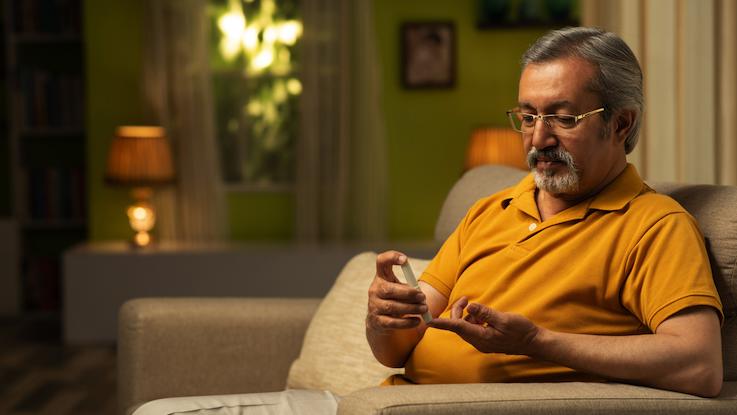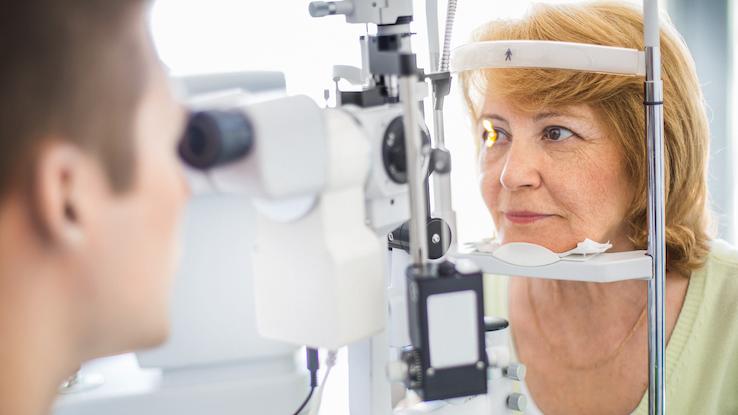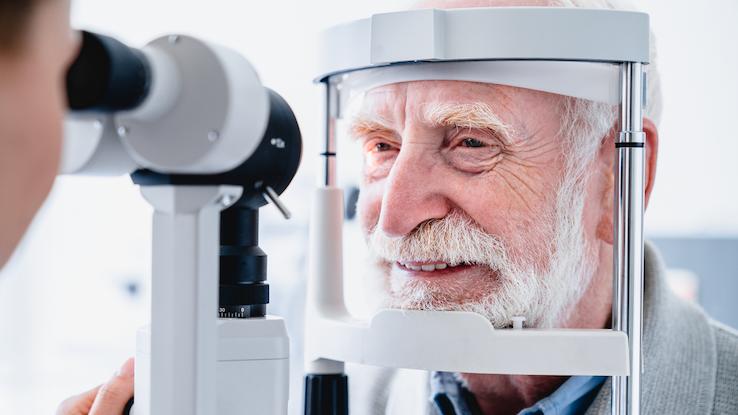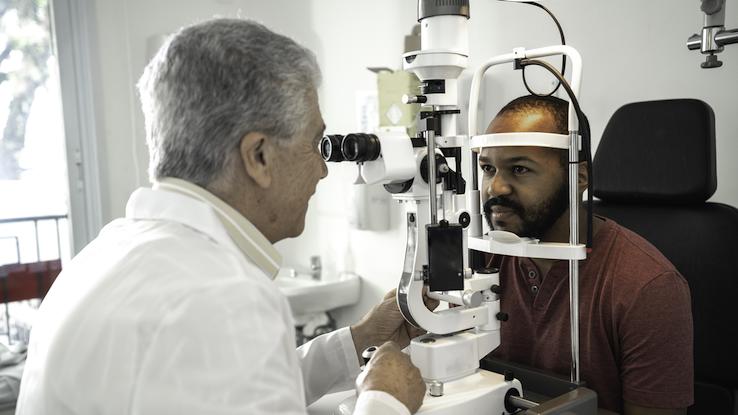
Over 34 million people in the United States are living with diabetes. Diabetes causes a range of health problems, including damage to the blood vessels in the eyes. That puts people with diabetes at risk for several types of diabetic eye disease, including diabetic retinopathy and diabetic macular edema.
Diabetes-related eye diseases are among the leading causes of vision loss in the United States. Learn about the symptoms of these conditions and how to protect your vision.
What Is Diabetic Retinopathy?

Diabetic retinopathy happens when diabetes causes damage to the blood vessels in the retina (the light-sensitive layer at the back of your eye). High blood sugar damages and blocks these vessels, so the body produces new blood vessels to replace them. But these newer blood vessels tend to be weak and often leak and bleed into the eye.
Symptoms of diabetic retinopathy include:
- Blurry vision
- Changes in your vision that come and go
- Floaters (dark spots or strings in your vision)
- Vision loss
In the early stages of diabetic retinopathy, you may not notice any symptoms. That’s why it’s important to get regular eye exams if you have diabetes. Your eye doctor can check for early signs of eye problems before they cause vision loss.
Over time, diabetic retinopathy can get worse and lead to severe vision loss or blindness — so tell your doctor right away if you notice any symptoms.
What Is Diabetic Macular Edema?

Diabetic macular edema (DME) is a complication of diabetic retinopathy. It happens when weakened blood vessels leak fluid into a part of the eye called the macula. The macula is the part of the retina you need for clear central vision. When fluid builds up in the macula, the swelling can cause severe vision loss or blindness.
Diabetic macular edema can happen in one or both eyes. Symptoms include:
- Blurry vision
- Wavy central vision
- Fading color vision
- Vision loss
Does Diabetes Cause Glaucoma?

Glaucoma is a group of eye diseases that damage the optic nerve (the nerve that connects the eye to the brain). Anyone can get glaucoma, but people with diabetes are more likely to get this disease — and to get it at a younger age.
Glaucoma symptoms include:
- Headache
- Blurry vision
- Eye pain or redness
- Seeing halo patterns around lights
- Blind spots in the center or sides of your vision
Does Diabetes Cause Cataracts?

Cataracts are cloudy areas on the lens of your eye that make it hard to see clearly. They’re very common in older adults. But high blood sugar can lead to a buildup of deposits on the lens of the eye, so cataracts tend to be more severe and appear at a younger age in people with diabetes. The good news is that surgery is very effective at fixing cataracts.
Early symptoms of cataracts include:
- Clouded, blurry or double vision
- Sensitivity to light and glare
- Seeing halo patterns around lights
- Trouble seeing at night or in dim light
- Frequent changes in your eyeglasses or contacts prescription
How to Prevent and Treat Diabetic Eye Disease

If you have diabetes, it’s very important to take steps to protect your vision. Follow these steps:
- Work with your doctor to manage your blood sugar. Keeping your blood sugar in a healthy range is the best way to prevent diabetes-related eye problems.
- Get a dilated eye exam at least once a year. Ask your doctor exactly how often you need exams. Regular eye exams can help catch eye problems early, when they’re easier to treat.
- Get your blood pressure and cholesterol checked and take steps to keep them under control. High blood pressure and cholesterol can make eye vessel damage worse.
- If you smoke, make a plan to quit. Smoking increases your risk for eye diseases like cataracts.
If your doctor diagnoses you with diabetic eye disease, there may be treatments that can help. The treatments are different depending on what type of diabetic eye disease you have, but they may include eye drops, pills, injections or surgery. You can work with your doctor to find the right treatment plan to protect your sight.
Resource Links:
- “Diabetic Retinopathy” via National Eye Institute
- “Macular Edema” via National Eye Institute
- “Glaucoma” via Mayo Clinic
- “Cataracts” via Mayo Clinic
- “Diabetic Eye Disease” via American Academy of Ophthalmology
- “Eye Complications” via American Diabetes Association
- “Diabetic Eye Disease” via NIDDK (National Institute of Diabetes and Digestive and Kidney Diseases)





